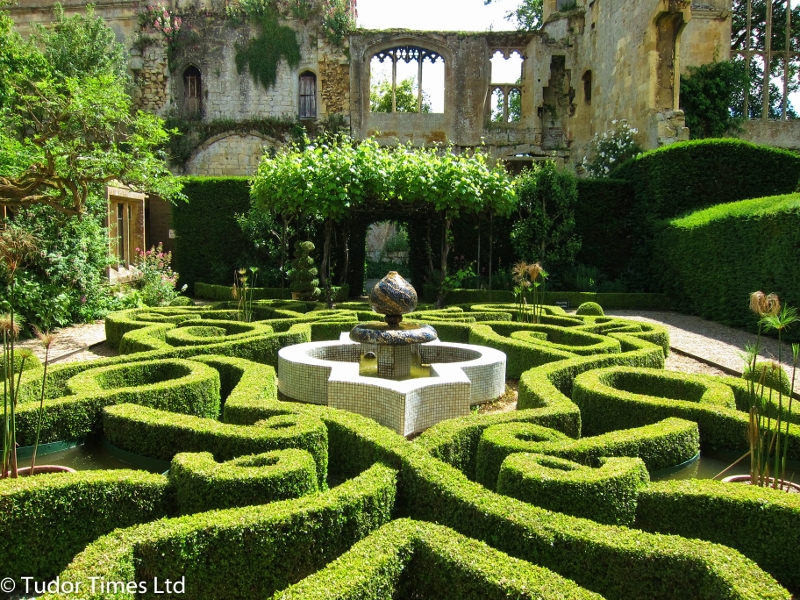Tudor Gardens
In the Tudor age gardens served a variety of purposes. First and foremost, they were for growing food. When only seasonal produce, or food preserved during a glut was available, the ability to grow a range of foodstuffs throughout the year could mean the difference between starvation and survival. Garden crops included onions, garlic and leeks.
The garden was also a medicine chest when plants and herbs were the first line of defence against illness. With space often limited, the more plants in the garden that could be used for several purposes, the better. Good examples are rosemary and lavender. Rosemary, a popular herb for culinary purposes, also formed the basis of astringent medicines and lotions. Lavender was even more useful – culinary and medicinal, it was additionally used for freshening linens and clothes, and even scattered in the rushes underfoot to keep them sweet.
For the better off, there might be sufficient space to grow plants for purely ornamental purposes, although plants we think of as purely decorative were frequently used in the home. Roses, a great favourite, were used in cookery, for making rosehip wine and also for perfumes, flower arrangements and pot pourri mixtures to keep rooms smelling sweet. Queen Katherine Parr was particularly fond of fresh flowers; ordering them for her rooms at Hampton Court.

Finally, as with everything in the Tudor world, ornamental gardens were a symbol of status. The development of theories of architecture and design in Italy in the fifteenth century influenced the kings and nobles of the next generation to take a personal interest in design, layout and planting. The Tudor age loved order and structure - the signature knot garden, where everything is in its place, reflects the culture of bending nature to useful production and the garden as a symbol of control and purity in a wild and disordered world.
It became fashionable to admire gardens – courtiers
shared tips and seeds and sent each other grafts. Henry VIII spent both time
and money in his privy gardens – he would stroll through, alone or with his
wife or daughter Mary (whose accounts show she frequently tipped gardeners for
bringing her flowers or fruit). Henry
was sufficiently interested in the nitty-gritty of gardening to give orders for
the weeding of his strawberry beds. Arranging for new gardens and orchards at
his palace at Greenwich was one of his last acts.
This article was first published on 21 April 2015 on the Britain Magazine website.
